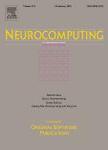版权所有:内蒙古大学图书馆 技术提供:维普资讯• 智图
内蒙古自治区呼和浩特市赛罕区大学西街235号 邮编: 010021

作者机构:Beijing Univ Posts & Telecommun Sch Elect Engn Beijing Key Lab Work Safety Intelligent Monitorin 10 Xitucheng Rd Beijing 100876 Peoples R China
出 版 物:《NEUROCOMPUTING》 (神经计算)
年 卷 期:2016年第214卷
页 面:629-642页
核心收录:
学科分类:08[工学] 0812[工学-计算机科学与技术(可授工学、理学学位)]
基 金:National Natural Science Foundation of China [NSFC-61402046, NSFC-61170176] Fund for Beijing University of Posts and Telecommunications [2013XZ10, 2013XD-04] Fund for the Doctoral Program of Higher Education of China
主 题:Iterative quantization Feature learning Binary coding Local descriptor Face recognition Face verification
摘 要:Binary feature descriptors have been widely used in computer vision field due to their excellent discriminative power and strong robustness, and local binary patterns (LBP) and its variations have proven that they are effective face descriptors. However, the forms of such binary feature descriptors are pre-defined in the hand-crafted way, which requires strong domain knowledge to design them. In this paper, we propose a simple and efficient iterative quantization binary codes (IQBC) feature learning method to learn a discriminative binary face descriptor in the data-driven way. Firstly, similar to traditional LBP method, we extract patch-wise pixel difference vectors (PDVs) by computing and concatenating the difference between center patch and its neighboring patches. Then, inspired by multi-class spectral clustering and the orthogonal Procrustes problem, which both are widely used in image retrieval field, we learn an optimized rotation to minimize the quantization error of mapping data to the vertices of a zero-centered binary hypercube by using iterative quantization scheme. In other words, we learn a feature mapping to project these pixel difference vectors into low-dimensional binary vectors. And our IQBC can be used with unsupervised data embedding method such as principle component analysis (PCA) and supervised data embedding method such as canonical correlation analysis (CCA), namely IQBC-PCA and IQBC-CCA. Lastly, we cluster and pool these projected binary codes into a histogram-based feature that describes the co-occurrence of binary codes. And we consider the histogram-based feature as our final feature representation for each face image. We investigate the performance of our IQBC-PCA and IQBC-CCA on FERET, CAS-PEAL-R1, LFW and PaSC databases. Extensive experimental results demonstrate that our IQBC descriptor outperforms other state-of-the-art face descriptors. (C) 2016 Elsevier B.V. All rights reserved.